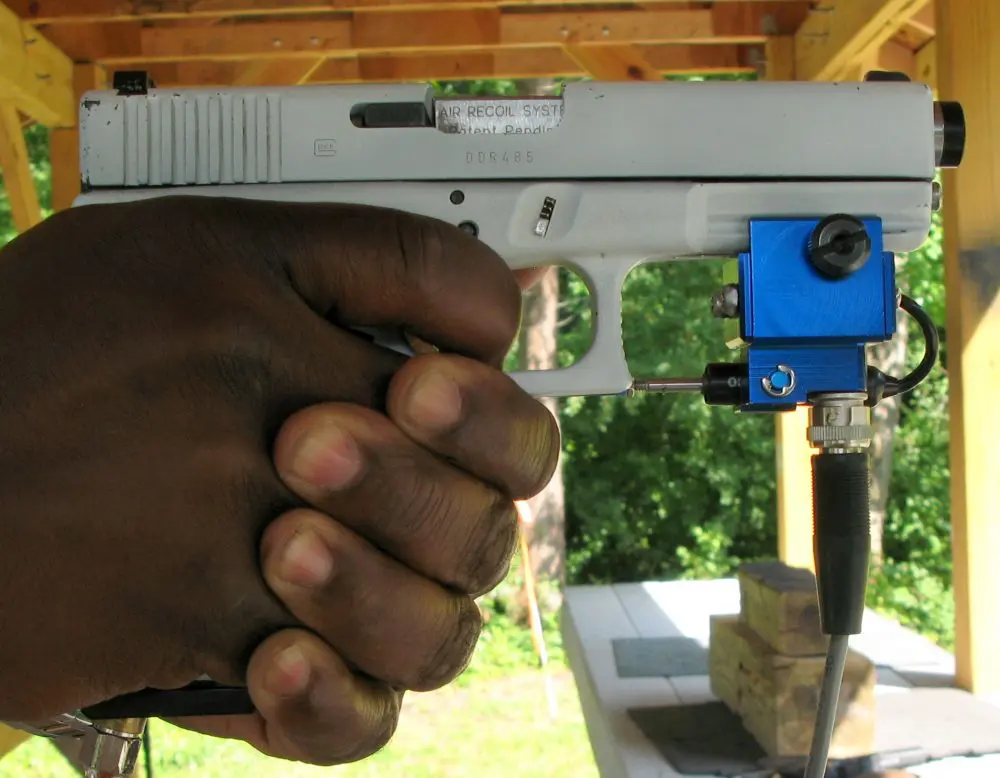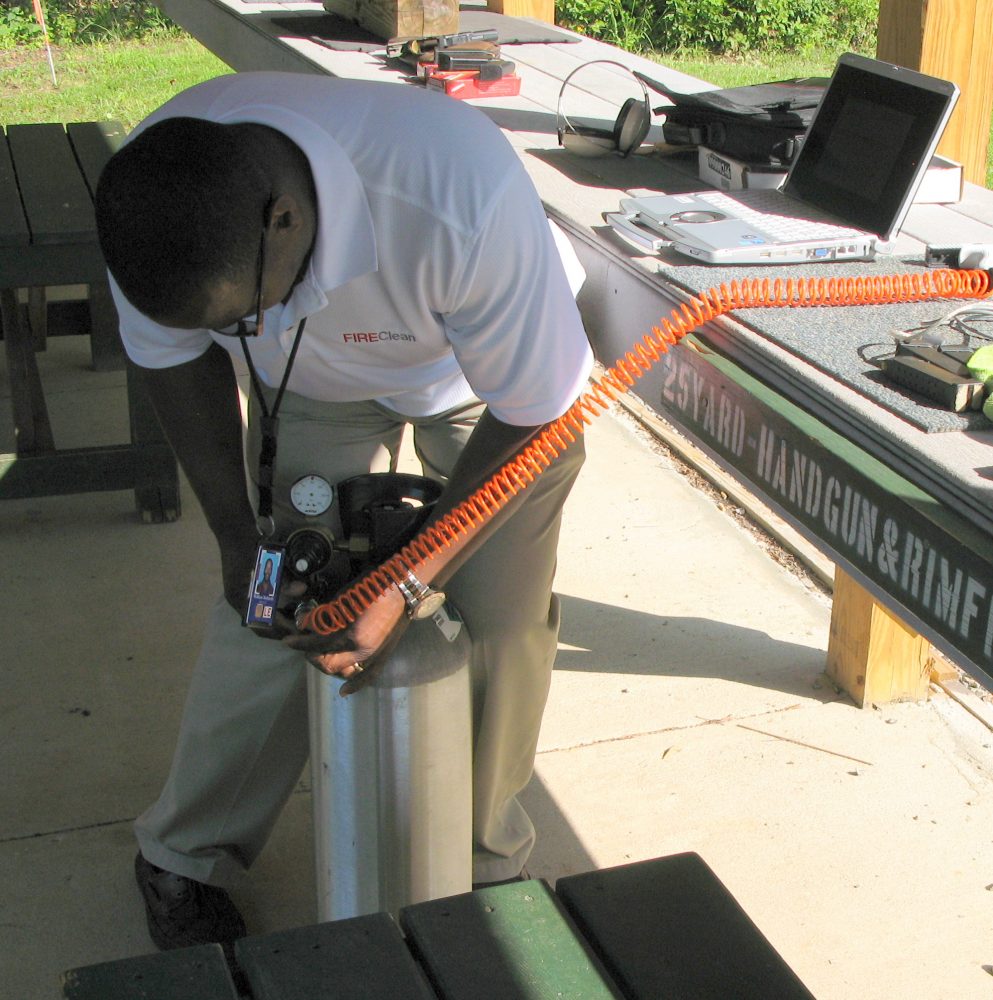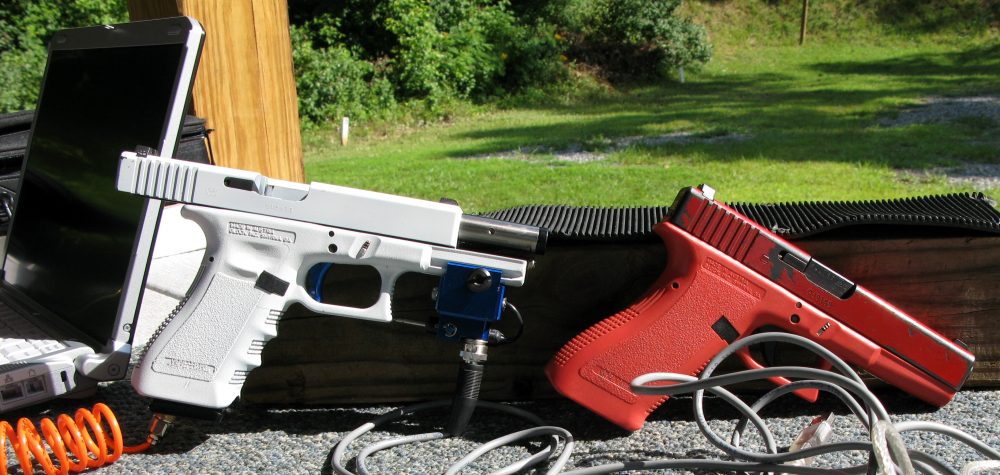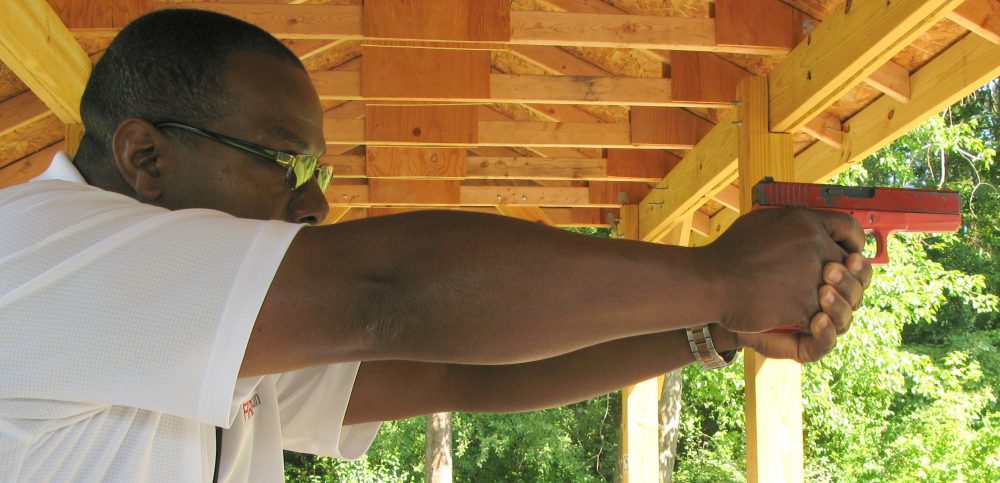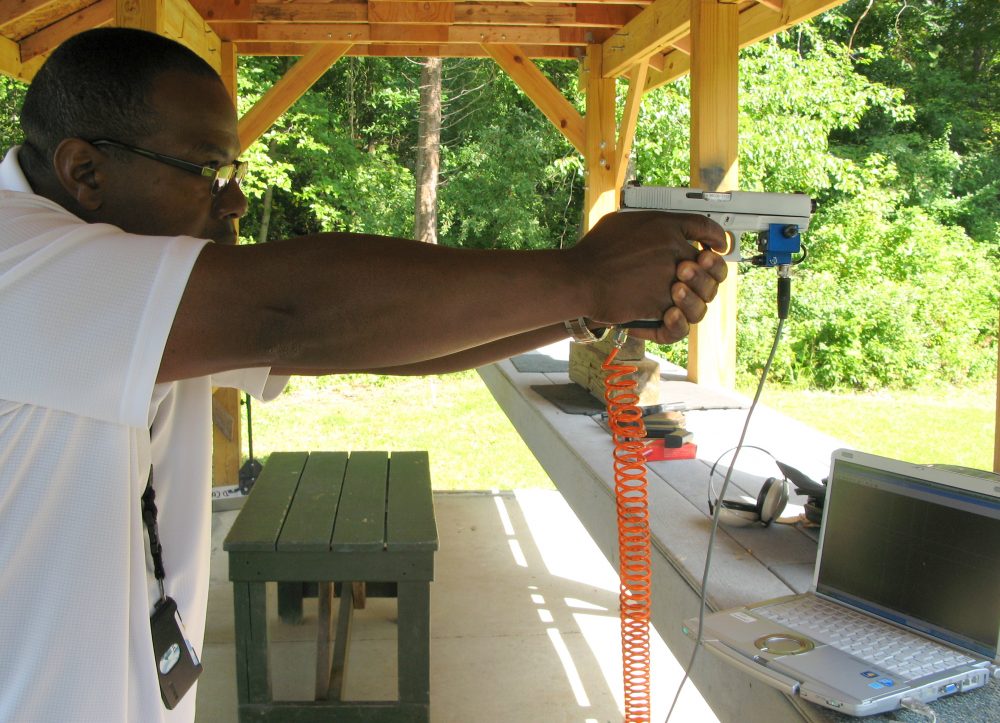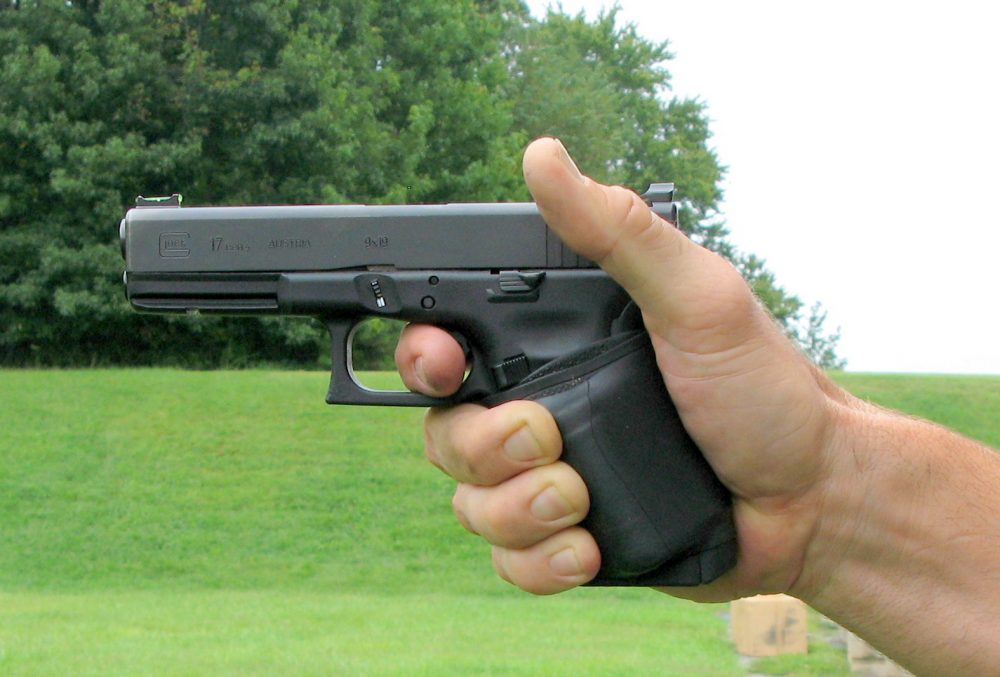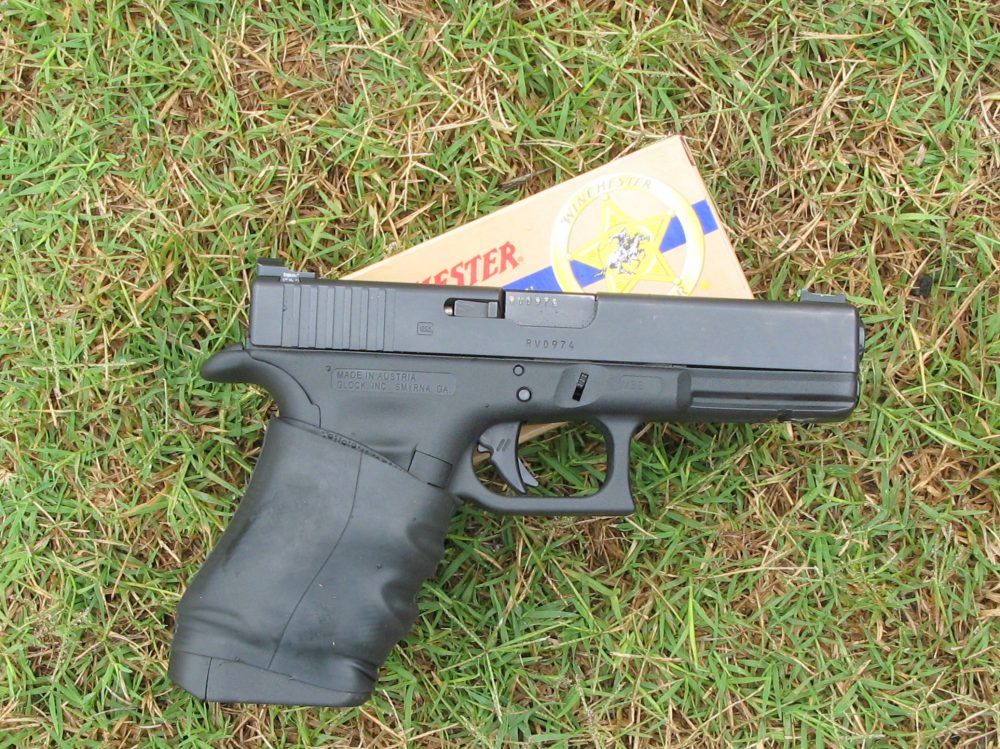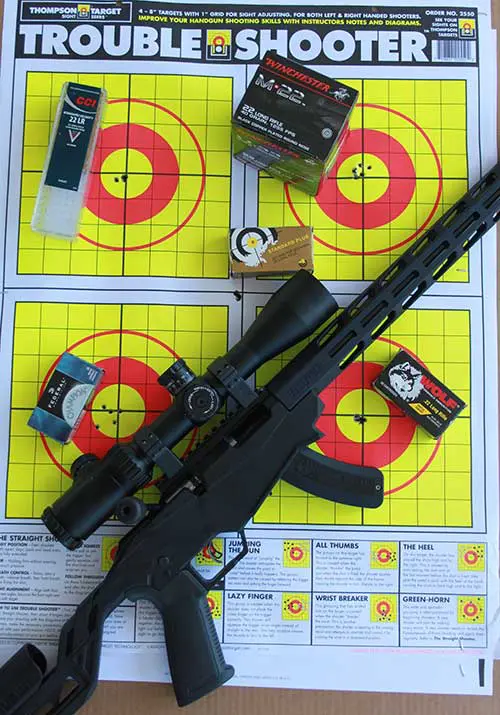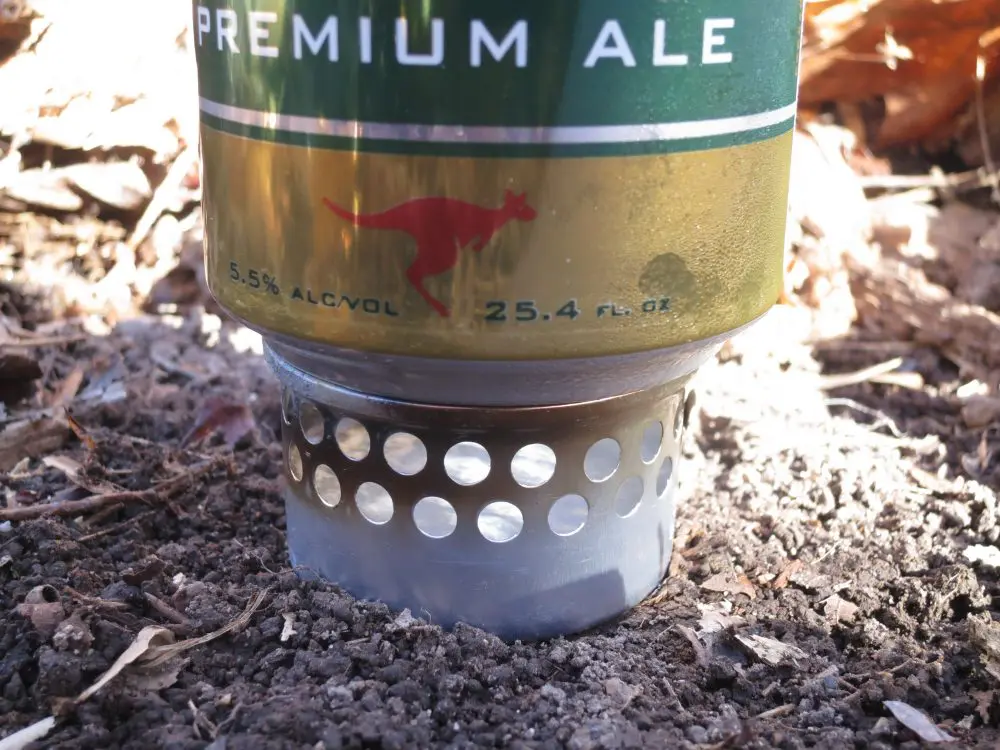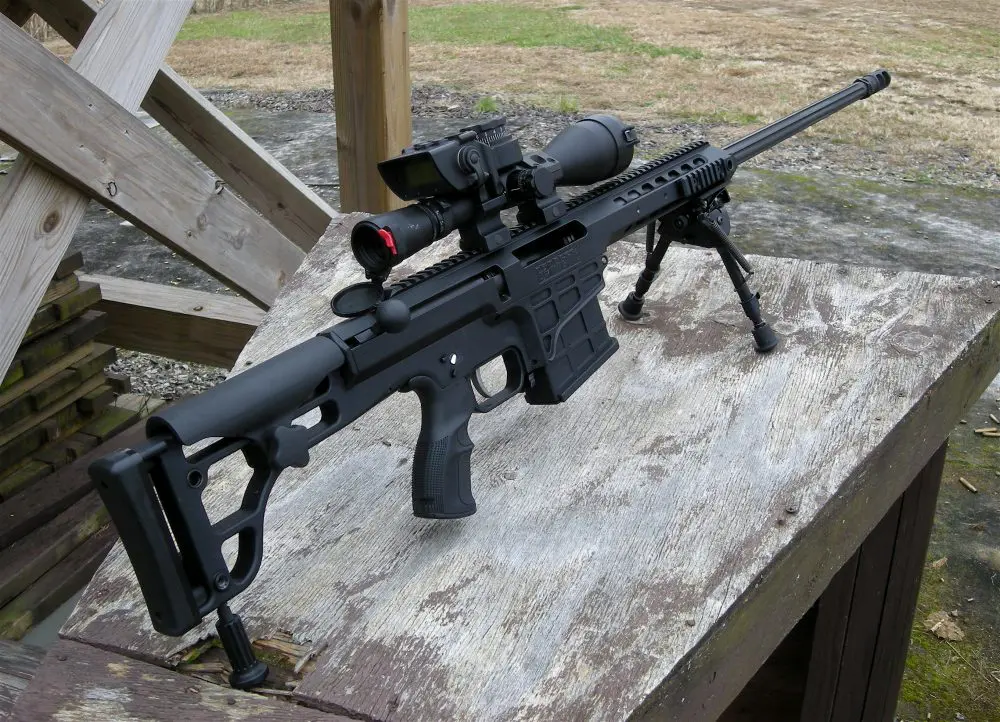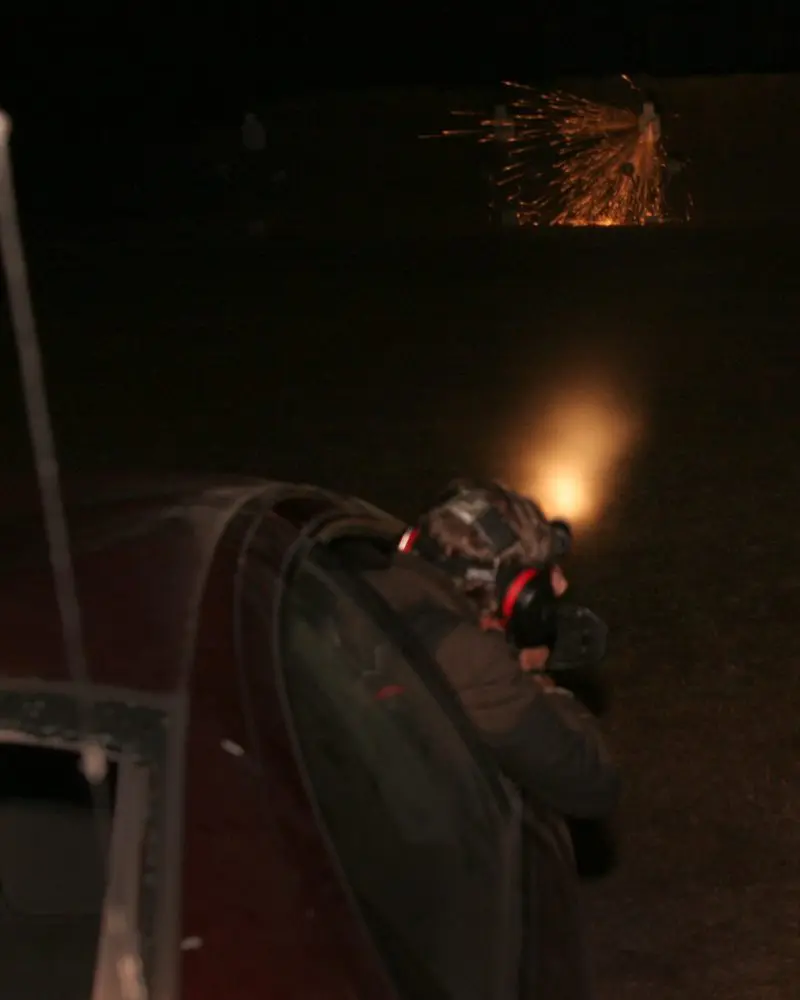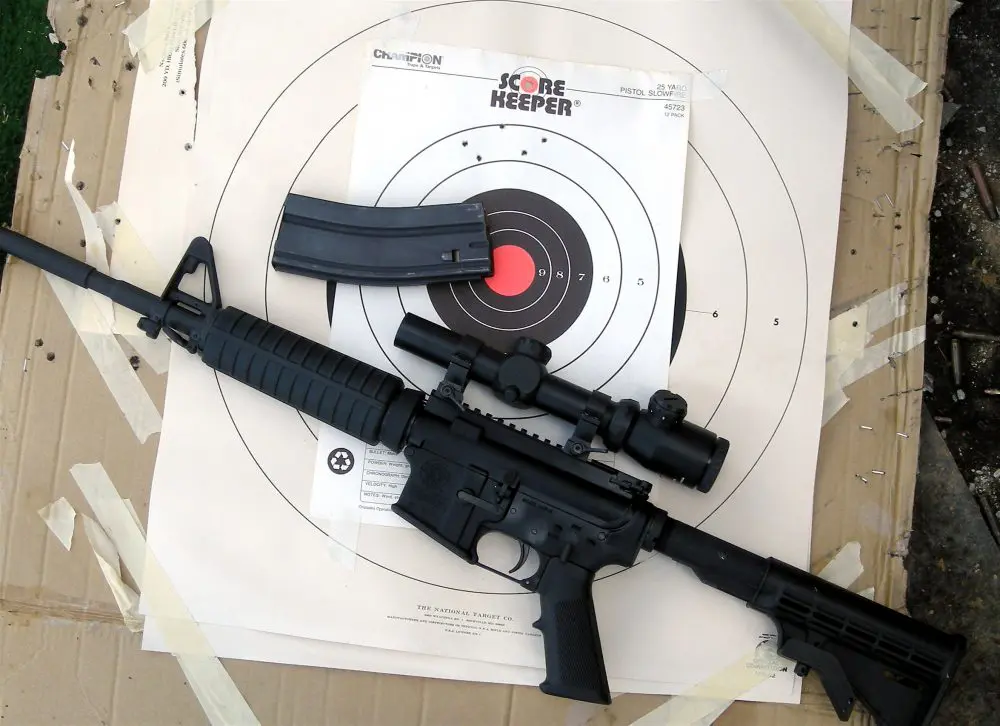When I was first exposed to formal handgun training, the Marine Corps transitioned from the one-handed hold to two hands, but still taught the “surprise break” method of trigger control.
After achieving a proper grip, the pistol was raised, sights aligned, and the first pad of the index finger’s first joint was placed on the trigger’s face. Care was taken not to have the trigger finger lay up against the receiver’s side or flat so sideward pressure would not be transmitted to the Colt 1911 at that point. Pressure in any direction except straight to the rear was verboten. With the sights aligned, a gradual increase in pressure was exerted to the rear until the trigger released the sear, causing the hammer to slap the firing pin, so it would punch the cartridge’s primer and hopefully the pistol would fire without the shooter knowing exactly when this would occur. Thus the surprise break.
This was fine for precision shooting and when not being fired upon, but the luxury of engaging a threat with a surprise break in combat was nonexistent, and doing so could get you killed. At typical close quarters (CQ) pistol fight envelopes, you were either the quick or the dead.
Close-up of front of Air Recoil System attached to G22’s rail.
Table of Contents
CLOSE QUARTERS PISTOL TRAINING
The only CQ training that I received in the Corps was in Basic School, when one of our captains, a former Korean POW, took us to the turning target range. All shooting was one handed, ten yards and we assumed the Colonel Rex Applegate crouch with the 1911 in the extended one-hand low ready.
We approached the targets in a stalking mode and were instructed to engage them with one to three fast shots from a point shoulder position. Back then we’d never heard of the double tap. Center-mass hits with 230-grain ball spun the targets 90 degrees as we closed with them.
Unfortunately, we didn’t do enough of this type of shooting as freshly frocked lieutenants in preparation for Vietnam. In fact, aware of my concerns, my company Gunnery Sergeant, a Korean combat vet, advised, “Lieutenant, if they get close enough for your pistol, feed ‘em a grenade.”
Top Shot All Stars William Bethards hooks up Compressed Air Recoil System tank to Glock 22 P (Practice). Pistol is same weight as fully loaded G22 and recoil is same as live fire.
FBI SURPRISE BREAK
Firearms training in the FBI is extensive and both speed and accuracy are valued, but accuracy is considered more important. J. Edgar Hoover was extremely concerned about collateral damage to innocents and keeping firearms concealed from the public unless display was unavoidable. Concealed carry was emphasized.
I was trained on the Smith & Wesson M&P .38 Special revolver. Single-action shooting was permitted at 50 yards, but double-action dominated shot delivery from 25 yards and in.
The surprise break was also our trigger control foundation. Proper finger placement was covered, with grip as high as possible on the back strap. The revolver’s grip was centered in the hand’s web and became an extension of the forearm with wrist locked. Rapid fire involved a rolling trigger technique that emphasized allowing the trigger to fully reset. Some agents came completely off the trigger during reset, while others developed a feel for their revolver’s trigger and maintained constant contact with the lever without short stroking it. A strong trigger return spring helped avoid that problem.
Grey pistol is Glock 22 P and is hooked up to Compressed Air Recoil System tank and computer to analyze shooter’s trigger-pull dynamics. It is an exact replica of the sidearm. Red Glock 22 is inert Constant Dry Fire practice pistol that does not require the slide to be reciprocated to reset its trigger.
While at the FBI Academy, my unit trained, administered and maintained the field SWAT teams, which consisted of 1,000 agents. The Special Operations and Research Unit (SOARU) also founded the HRT and trained its plank owners.
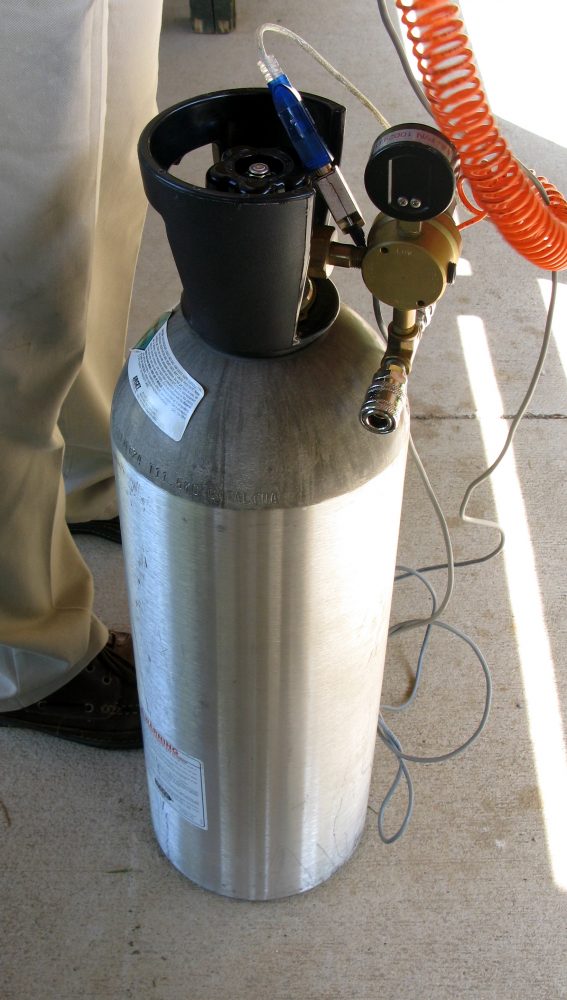
When we acquired the MP5A3 submachine gun, we started teaching trigger reset (TR) to control its relatively heavy seven-pound trigger. I don’t recall where the technique came from, but the HRT carried the method over to their Browning HPs after they replaced their S&W M19 revolvers with the 9mm.
This method of trigger control was also taught by the DEA and FBI firearms training units when they adopted pistols, and SOARU conveyed that technique to its SWAT students. It worked well for all hands.
After a surprise break or after the firearm discharged, contact with the trigger was maintained and it was allowed to travel forward only far enough for the trigger to re-engage the sear, which you can feel and hear under range conditions. Most shooting schools I attended taught the surprise break and trigger reset.
I first became aware of a different trigger technique from competitive shooters Todd Jarrett and later Rob Leatham. Even though Jarrett advised that the technique allowed him to “shoot any gun with any trigger well,” I dismissed it as merely being a race gun method that had little real-world application.
Rob tried to teach it to FBI HRT and field SWAT firearms instructors, but they resisted it. That has now changed, because the new breed of operators considers trigger reset a fine motor movement that will not hold up under stress.
ROLLING TRIGGER AND CONTROLLED SLAP
Some, like Police Officer Antoine Lane, call it “rolling trigger” technique, where the “trigger finger remains in motion for a controlled slap of the trigger” to cope with loss of trigger feel and the inability to hear the TR over the noise and stress of a gun battle. In my own experience, I know that I probably did, but was not aware of defaulting to trigger slap (TS) when engaging a close threat flat out.
Most winners of spontaneous gun battles can’t tell you if they used their sights or resorted to point shooting, let alone remember how they operated their triggers. But under stress, the mind and body prefer simple responses, and TR is considered a sophisticated movement that requires fine motor skills. Our subconscious will discard it for the simplest response in the face of death or serious injury.
Bethards dry fires inert G22 Constant Dry Fire practice pistol. Law enforcement candidates practice with them during down time.
It has been described as a “free-flowing/rolling trigger method.” The shooter pulls the trigger straight to the rear and during recoil allows the trigger to fully return to its original (at rest) position in preparation for a subsequent shot. Whether the finger comes completely off the trigger during the firing sequence is irrelevant.
What is important to remember is that the trigger finger stays in motion. It is a flowing motion naturally from front to back. The end result is a “sophisticated slap” of the trigger that is fast, accurate, and more likely to be utilized by the brain’s subconscious response during a lethal encounter.
Bethards “fires” Air Recoil System Glock 22 P. When connected to the Trigger Pull Trainer and Panasonic Toughbook, it will visually and graphically record shooter’s trigger pull on laptop screen.
OUT–BACK TECHNIQUE
Subsequently, I ran this by shooting partner and Top Shot All Stars finalist William Bethards, and he totally surprised me by saying it was being taught in the FBI and Marine Corps and had been for some time.
He called it “out–back.” He also called it the “continuous motion trigger” and that it “gives you time to recover from recoil and pick up the front sight with equal height and equal light.” Simply stated, the trigger is fully released after the shot breaks and then brought back quickly until sear resistance is encountered. Bethards advised that the technique enables you to “shoot any firearm at any speed at any distance and works for competition as well as self-defense.”
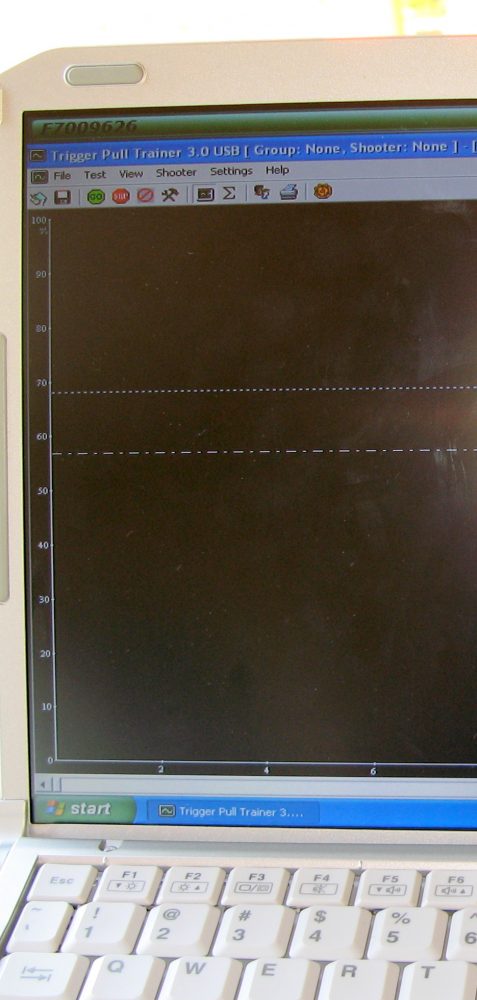
Since short stroking the trigger is eliminated, trigger stutter or trigger freeze is also negated and is most evident when shooting at high speed at close quarters threats. He continued by stating that out–back is faster than TS, but it is not achieved by moving the trigger faster, but that “firmer pressure on the trigger increases speed and the speed of out-back never changes as distance changes.” Subsequent trigger press commences as soon as slack is taken up.
He cautions that students who are new to this method will have premature discharges in the beginning, and the best triggers to learn on are those with slack or take-up, such as military two-stage triggers. The most difficult to apply out-back to initially are tuned 1911s with little or no take-up. Bethards also admonished that triggers should be habitually manipulated like you are going to fire an additional shot.
LEARNING OUT-BACK
Bethards opined that the best way to learn how to manipulate the trigger is without shooting (dry fire). “Practice by pressing the trigger, hold it to the rear, rack the slide, aim in, rapidly release the trigger, and come back to felt trigger resistance. This is your starting and stopping point each time you press the trigger.” This action must be repeated until it becomes part of your subconscious and is ingrained into your muscle memory.
This repetition will enable you to consistently perform this technique without pressing through the reset, causing the weapon to repeat fire. Length of time required and number of repetitions involved will vary from student to student, but typically five to 15 minutes is sufficient if taught correctly and also applies to the extent of live fire, if the shooter does not have any other issues.
Red (inert) Glock 22 P (Practice) pistols with constant triggers, so the slide does not have to be cycled for trigger reset, are employed for practicing the technique.
DVORAK SYSTEM
The Dvorak System is used by federal law enforcement agencies to provide a profile of a shooter’s trigger pull at various speeds of shot delivery and establish a trigger graph. It uses a compressed air firearm that duplicates the recoil of a live weapon and has been in use since the 1980s.
It was originally used for remedial shooters, but its best application is for good shooters to eliminate any flaws in their technique. When using it with new hires, it accelerates learning. Some agencies have enjoyed a 90+% pass rate with the device. This system is also located in agency field divisions for continuous in-house training where needed.
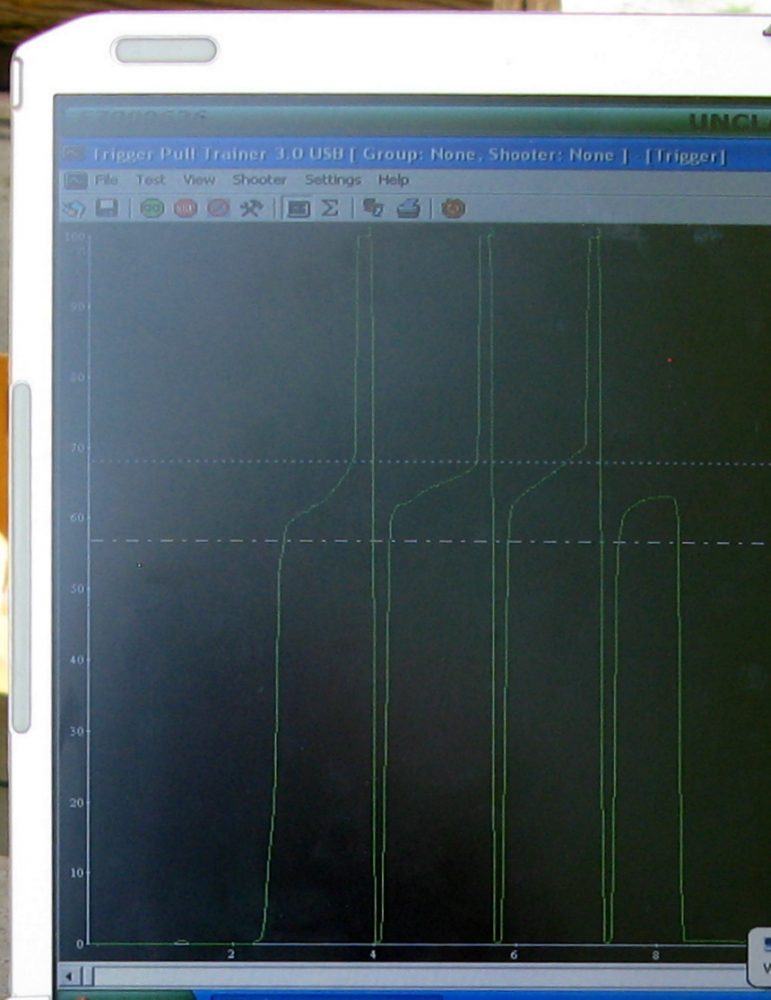
A Glock 22 P painted with gray Cerakote and assembled by government armorers is linked via air hoses and electronics to a Trigger Pull Trainer (TPT), which consists of a SCUBA air tank, Panasonic Toughbook laptop, and proprietary software. The pistol is the same weight as a fully loaded G22, has night sights for low visibility work, and recoil is duplicated by the TPT.
After the trigger’s length of travel in both directions is calibrated to the computer, the laptop’s screen displays a trigger graph that measures trigger movement from 0 to 100%, when the trigger first meets sear resistance, and the actual time of fire or trigger/shot break. The device displays a shooter’s consistency or inconsistency of trigger pull on a visible graph that has a time line graduated in two-second intervals.
NATIONAL COUNTERTERRORISM ASSET TRIGGER TRAINING
Many counter-terrorist gunfighting assets have been exposed to John Shaw’s Mid South (MS) training complex. Mid South is owned by Shaw, but training, maintenance and innovation have been turned over to Ross Sanders, whom Shaw trained in his techniques several years ago. Ross has continued MS’s success and regularly hosts Tier One federal and military teams at its isolated facilities.
A member of one of these teams advised me that he picked up the “Fast Off, Slack Out and Trigger Squeeze” (FOSOTS) technique from Sanders, who actively listens to his students and absorbs and applies the latest high-speed, low-drag practical gunfighting methods to his instruction. He has passed the FOSOTS technique onto his parent agency, even though they initially resisted it. They later recanted when they saw high-speed video that revealed what shooters really do when shooting at “warp speeds.”
His reasons for introducing the technique to his team’s operators are:
- Reduces potential to jerk trigger.
- Trigger short stroking is eliminated.
- Can shoot any weapon’s trigger. Not subconsciously married to a particular trigger.
- Coming off the trigger after the shot breaks tends to relax the grip, which prevents over-gripping, which in turn reduces the chance of subsequent shot trigger finger freeze.
- During high speed or burst shooting, most people come off the trigger anyway.
- If you reset to the audible or tactile trigger click, you slow down to hunt for it.
- If you are slower here, you tend to pull fast or harder, resulting in a jerk.
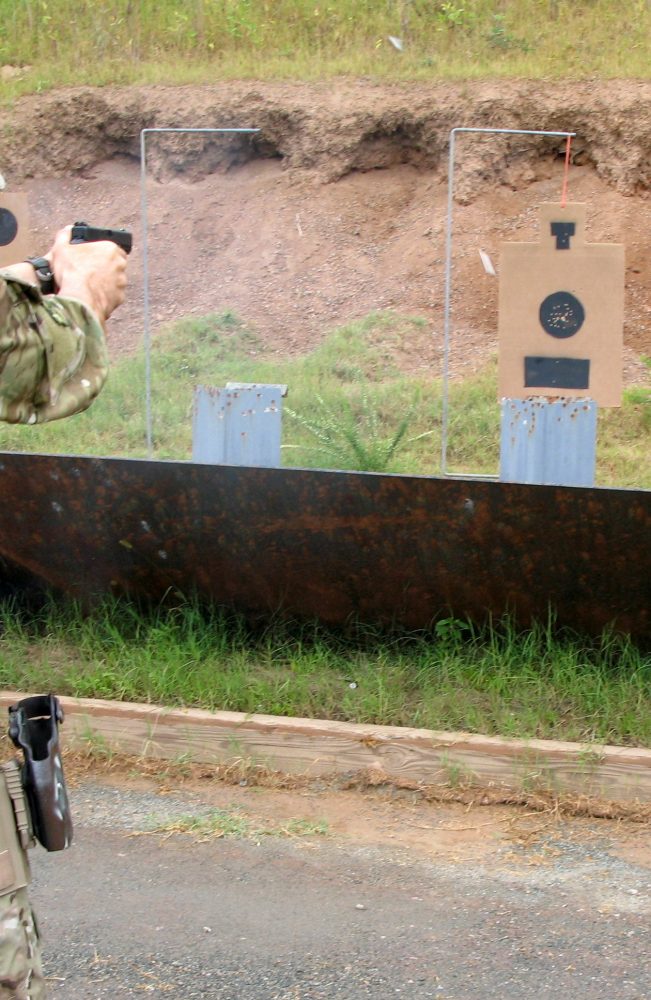
Technique
The grip in the holster is built/established via touch points (the groove/muscle memory) on the gun. The gun hand’s middle finger touches/indexes the side of the grip, slides around to the front strap, and comes to rest under the trigger guard where it meets the front strap. This middle finger lifts the gun from the holster and grips the gun hard. Both the primary and support middle fingers are the keys to a good grip. The support-hand middle finger also locks under the trigger guard. The fourth and fifth fingers of the dominant hand should be relaxed, which sets up the trigger finger for quickly coming off the trigger after shot break.
The index finger goes deep into the trigger, up to the first joint. Trigger finger contact with the side of the frame is irrelevant. Concern for finger pressure on the receiver has been overstated. This placement allows the trigger only to move and reduces finger curl, which pulls the gun laterally.
Trigger prep is important for the first shot, which should break at the end of the extension of the firearm. The shooter talking out loud while executing the technique is also important. You can shoot and talk at the same time. The body relaxes when talking. Don’t tense up.
When the shot breaks, it is FOSOTS. Come off the trigger as fast as you can, followed by getting back on the trigger as fast as you can, taking out slack/take-up and putting increased pressure on the trigger.
When first learning the technique, you will experience “Happy Finger,” which is a premature or an earlier than anticipated shot. This is a surprise break, and in most cases it will be right where you want it to be. Humans are hard to stop and even if you did not intend to fire a subsequent shot, any threat worth shooting once is worth shooting twice. If you are justified to shoot a shot, you are justified in shooting another. Humans are hard to stop.
Operator shows grip and trigger finger placement. Thumb will be locked down for one-handed shooting and trigger finger will acquire trigger up to its first joint.
CONCLUSIONS
It’s hard to break old habits and I got pretty good with the trigger reset technique, but I can appreciate the rationale behind fine versus gross motor movements. Because of mega repetitions of trigger reset, I have always assumed I would subconsciously default to it in a gun battle. I was involved in three law enforcement shootings and can’t tell you how I cranked on the trigger.
However, after listening to the arguments and seeing what I actually do when running a pistol as fast as I can, the newer method appears to be the most correct. Realistically, new and inexperienced shooters will have an easier time of mastering the out-back trigger control technique, and it is easier to learn with a heavier trigger.
Operator replaced pistol’s OEM sights for increased sight radius and introduced a fiber optic up front. He uses time-tested “Glock Sock” rubber inner-tube grip enhancement. He has inserted palm swells and beavertail under the rubber.
Does this mean that shooters wed to trigger reset will be ineffective when the flag goes up? Like Weaver versus Isosceles stance, trigger reset versus out-back may just boil down to a matter of personal preference.
Most of us older dudes may no longer have to thread the hostage needle, but when called upon, we will do fine.
SOURCE
DVORAK AIR RECOIL SYSTEMS
(918) 447-0022
www.dvorakinstruments.com
